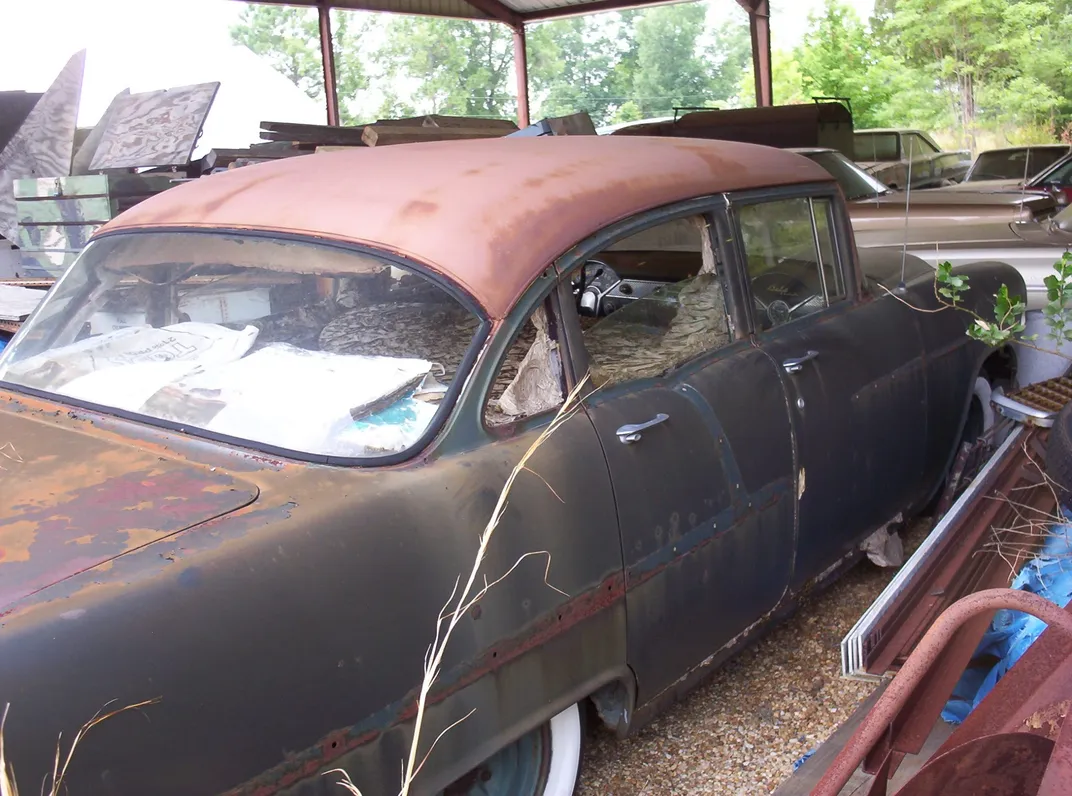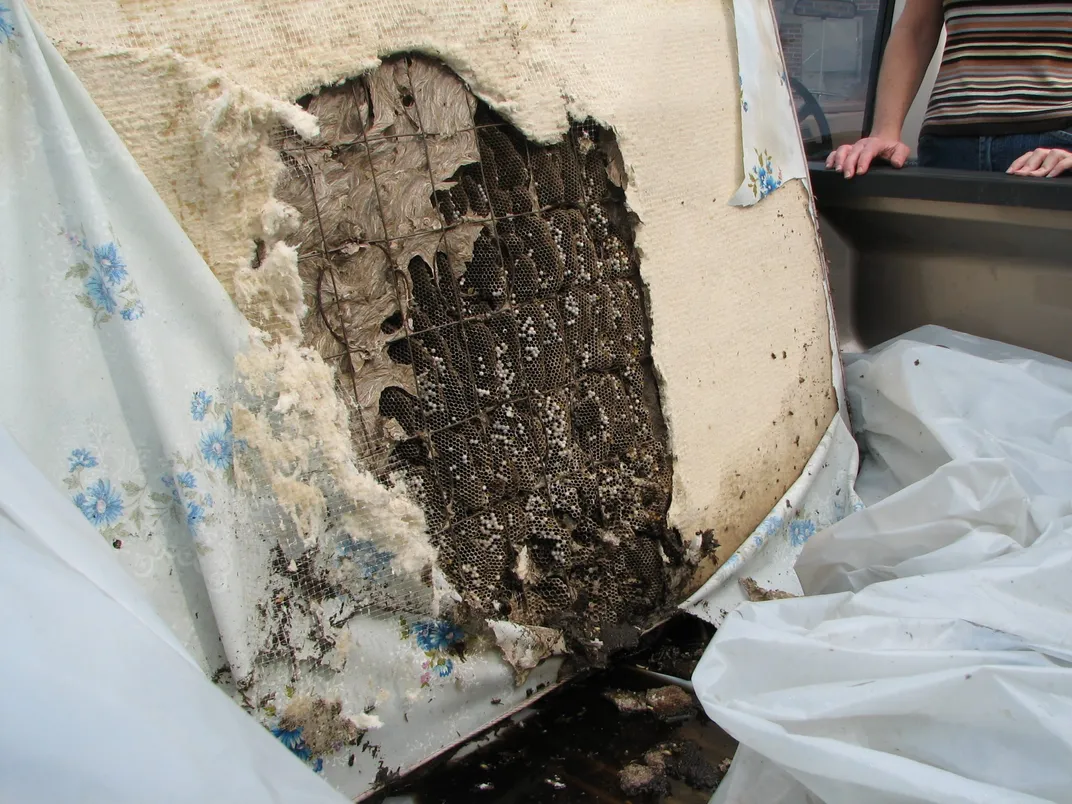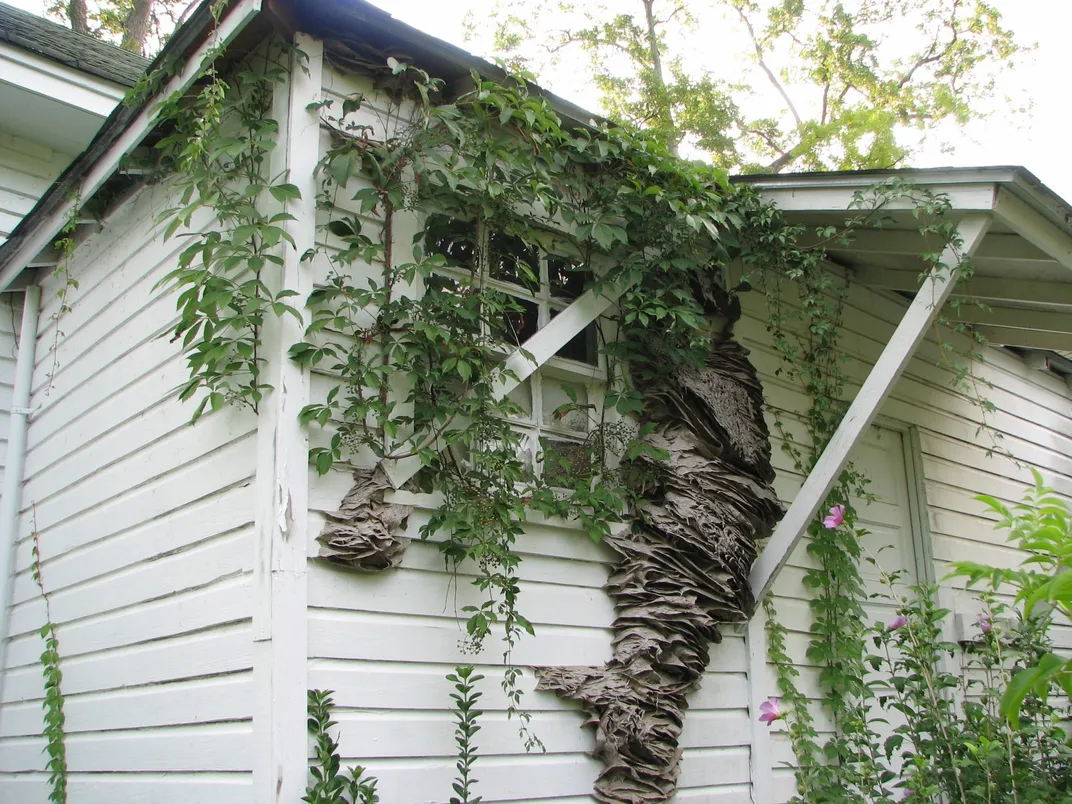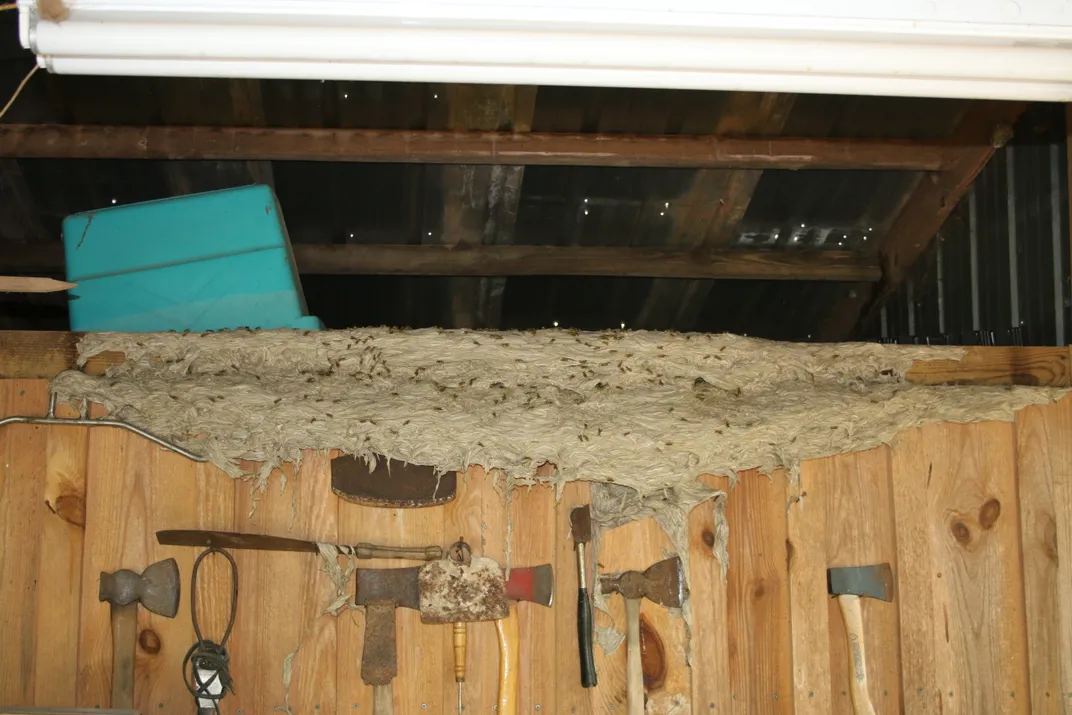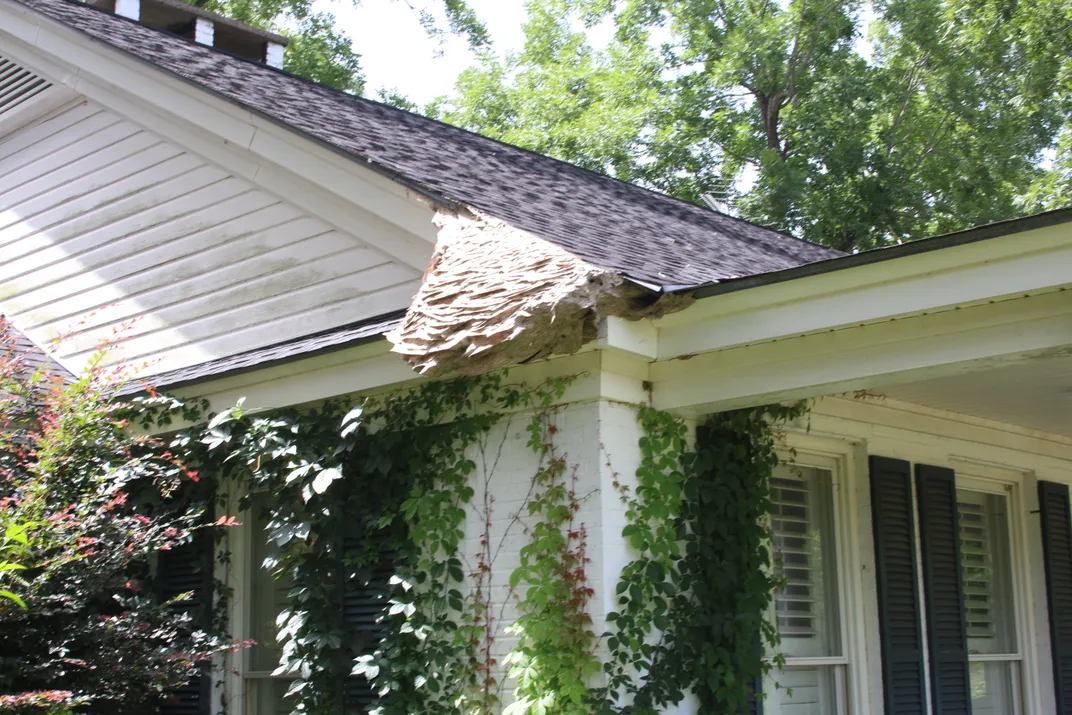Alabamians, Beware the Wasp ‘Super Nest’
Having survived an unusually mild winter, yellow jacket wasps are building huge nests, sometimes in human spaces
/https://tf-cmsv2-smithsonianmag-media.s3.amazonaws.com/filer/dd/d6/ddd63e18-5b58-4e4c-99f7-bef067e9fb5a/img_0819.jpg)
Yellow jacket wasps are known to build large nests, which can reach the size of a volleyball and contain up to 5,000 workers. But in Alabama, officials are warning residents to look out for yellow jacket abodes that are swelling to huge proportions, stretching several feet wide and buzzing with thousands more critters than the average nest. And yes, the wasps will sting—repeatedly—in defense of their home.
On a typical year, one or two of these so-called “super nests” will be reported in the state, usually in June and July. But Charles Ray, an entomologist with the Alabama Cooperative Extension System, tells Mariel Padilla of the New York Times that he has already confirmed four super nests this year. And the reports came early, starting in May, sparking concerns that Alabama could be gearing up for another summer like 2006, when more than 90 super nests were recorded.
“I am very concerned that there will be a large number of them in the state,” Ray says in a statement. “The nests I have seen this year already have more than 10,000 workers and are expanding rapidly.”
Yellow jacket wasps, which are plentiful in the southeastern United States, build intricate nests from chewed wood fibers and saliva, often repurposing underground rodent burrows for their homes, according to NPR’s Dani Matias. But the insects have also been known to hunker down in the cavities of human spaces, like attics, cracks in walls, crawl spaces and even abandoned cars.
Most yellow jackets die during the winter, felled by the cold weather and a lack of food. Only the queens stand a chance of making it to the spring; they are “the only ones who have [an] antifreeze-like compound in their blood,” Ray tells Matias. A single nest can produce 4,000 queens by the end of the fall, and most don’t make it through the winter. Under normal circumstances, perhaps one of the nest’s queens will be alive to start her colony afresh when the weather warms.
But if the winter is mild and the bees’ food sources remain abundant, some colonies can survive the colder months and enter the spring with much larger numbers than usual—as seems to have been the case in Alabama. “With our climate becoming warmer, there might be multiple surviving queens producing more than 20,000 eggs each,” Ray tells Padilla of the Times.
Seemingly out of nowhere, yellow jacket nests can balloon in size, spreading across the exteriors of homes and “other places you might not expect to find yellow jackets,” according to Ray. The colonies inside these super nests—also known as “perennial nests,” because they survive more than one year—are huge. One super nest in South Carolina was found to contain 250,000 workers.
Experts caution people to steer clear of these massive nests, because the wasps inside are very aggressive. “Unlike other stinging insects, yellow jackets like to sting people,” Xing Ping Hu, also an entomologist with Alabama Extension, explains. “Unlike honey bees, yellow jackets do not lose their stinger, so each insect can sting repeatedly and generally attack in large numbers. They are especially dangerous in the summer.”
Almost all stinging deaths in the United States are caused by yellow jackets, Hu added.
So if you find a super nest, don’t touch or try to remove it, experts caution. Only licensed pest control operators should attempt the job—though even professionals might balk at the prospect of tackling an oversized hub of angry wasps, Ray says. For the sake of science, Ray is more willing than most of us to approach the swarm; he asks that Alamabians who find super nests to contact him so he can take photographs and collect specimens.
